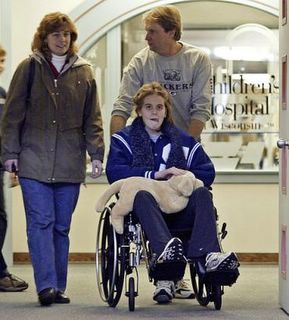Update on the Genetics of Stroke and Cerebrovascular Disease 2004
Stroke. February 2005; Vol. 36, No. 2, 179
Key Words: Advances in Stroke • intracranial aneurysm • subarachnoid hemorrhage
Intracranial aneurysms (IA): A Finnish study of 222 affected relative pairs with IAs found evidence for linkage near locus D19S246. Several promising candidate genes are located around this locus. Another study involving families from Japan and Utah found evidence for linkage at locus D7S2421, which is near the elastin gene. Some previous studies have failed to confirm linkage of IA to elastin. Perhaps this reflects ascertainment issues to indicate genetic heterogeneity of the IA trait. A recent linkage study using a very large family with apparent autosomal dominant IAs identified a locus on chromosome 1p34–36. A recent study investigated the collagen 2 gene in Japanese patients with IAs. A significant association between an exonic single nucleotide polymorphism and familial IA was found. This single nucleotide polymorphism causes an amino acid change from alanine to proline with a change in thermal stability for the collagen triple-helical domain.
Cerebral cavernous malformations (CCMs): Three loci for CCM have been identified: CCM1 (chromosome 7q), CCM2 (7p), and CCM3 (3q). The genes responsible for all 3 types of CCM have now been identified. CCM1 is caused by KRIT1, CCM2 is caused by MGC4607 (also known as malcavernin), and CCM3 is caused by programmed cell death protein 10.
Ischemic Stroke:
CADASIL:Remains the prototypical inherited type of inherited ischemic stroke. The exact pathogenesis of CADASIL remains a mystery, although mutations in Notch3 are known to cause this autosomal dominant disorder. Several studies have suggested that a gain-of-function process is responsible for the disease phenotype, whereas others have suggested an abnormality in a signaling pathway for some patients.
New information about genetic aspects of ischemic stroke has emerged in several areas. The DeCode group published another study showing that a 4-marker single nucleotide polymorphism in the 5-lipoxygenase activating protein was associated with almost a 2-fold increased risk of stroke. As with the discovery of the association between stroke and the phosphodiesterase 4D gene last year, these advances await confirmation by other research groups and validation in animal models of stroke.
Polymorphisms in a host of other genes have been reported to be associated with ischemic stroke, including the low-density lipoprotein receptor, endothelial nitric oxide synthase, tissue plasminogen activator, serum paraoxonase, and glycoprotein IIIa (a platelet membrane receptor for fibrinogen and von Willebrand factor). In many cases, these associations are only for specific subtypes of ischemic stroke, or the polymorphisms are intronic with no known functional significance for gene expression or protein function.
The ongoing POLARIS study will hopefully address some of these concerns with its large number of patients and careful study design. Perhaps one of the most intriguing new studies report an association between a polymorphism in the COX-2 gene and ischemic events. The polymorphism is at position –765 and causes a G-to-C change. This polymorphism had a protective effect, reducing the risk of myocardial infarction and ischemic stroke, and reducing C-reactive protein and MMP2 and MMP 9 expression. These findings may be relevant in light of recent reports of an increased risk of ischemic events caused by some COX-2 inhibitors.



